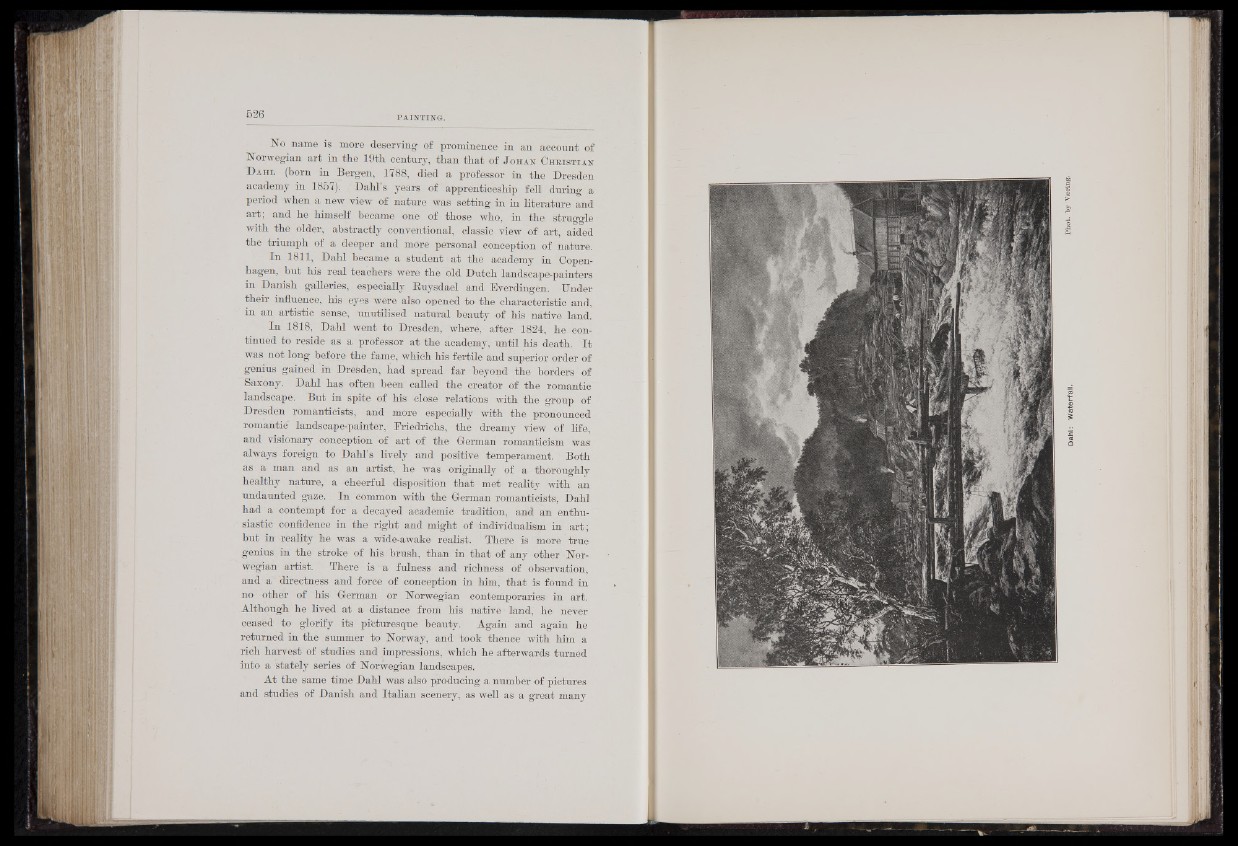
No name is more deserving of prominence in an account of
Norwegian art in the 19th century, than that of J o h a n C h r i s t i a n
D a h l (born in Bergen, 1788, died a professor in the Dresden
academy in 1857). Dahl’s years of apprenticeship fell during a
period when a new view of nature was setting in in literature and
art; and he himself became one of those who, in the struggle
with the older, abstractly conventional, classic view of art, aided
the triumph of a deeper and more personal conception of nature.
In 1811, Dahl became a student at the academy in Copenhagen,
but his real teachers were the old Dutch landscape-painters
in Danish galleries, especially Buysdael and Everdingen. Under
their influence, his eyes were also opened to the characteristic and,
in an artistic sense, unutilised natural beauty of his native land.
In 1818, Dahl went to Dresden, where, after 1824, he continued
to reside as a professor at the academy, until his death. I t
was not long before the fame, which his fertile and superior order of
genius gained in Dresden, had spread far beyond the borders of
Saxony. Dahl has often been called the creator of the romantic
landscape. But in spite of his close relations with the group of
Dresden romanticists, and more especially with the pronounced
romantic landscape-painter, Friedrichs, the dreamy view of life,
and visionary conception of art of the G-erman romanticism was
always foreign to Dahl’s lively and positive temperament. Both
as a man and as an artist, he was originally of a thoroughly
healthy nature, a cheerful disposition that met reality with an
undaunted gaze. In common with the German romanticists, Dahl
had a contempt for a decayed academic tradition, and an enthusiastic
confidence in the right and might of individualism in art ;
but in reality he was a wide-awake realist. There is more true
genius in the stroke of his brush, than in that of any other Norwegian
artist. There is a fulness and richness of observation,
and a directness and force of conception in him, that is found in
no other of his German or Norwegian contemporaries in art.
Although he lived at a distance from his native land, he never
ceased to glorify its picturesque beauty. Again and again he
returned in the summer to Norway, and took thence with him a
rich harvest of studies and impressions, which he afterwards turned
into a stately series of Norwegian landscapes.
At the same time Dahl was also producing a number of pictures
and studies of Danish and Italian scenery, as well as a great many